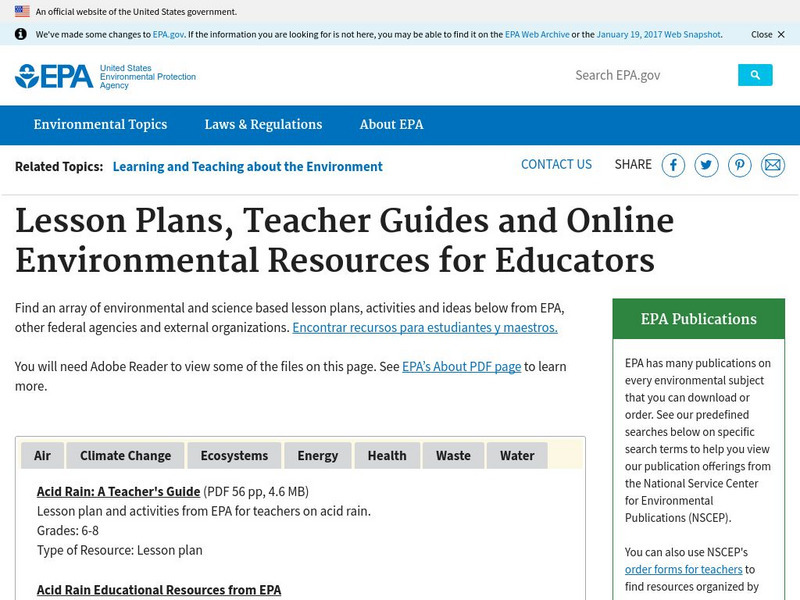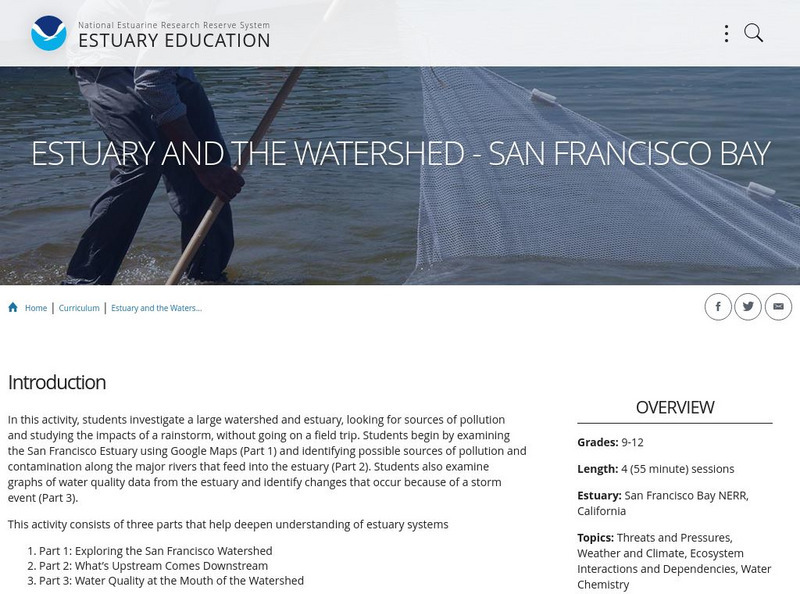Science Education Resource Center at Carleton College
Serc: Investigating Ponds and Streams: How Clean Is Our Water?
In this field lab, students investigate the differences in three city ponds. Students will compare pond life, temperature, pH, Ammonia, dissolved oxygen, and Nitrate. The student use the pond sheets (Flinn Scientific Catalog 2007) to...
TeachEngineering
Teach Engineering: Pea Soup Ponds
In this activity, students will learn how water can be polluted by algal blooms. They will grow algae with different concentrations of fertilizer or nutrients and analyze their results as environmental engineers working to protect a...
TeachEngineering
Teach Engineering: Groundwater Detectives
Student teams locate a contaminant spill in a hypothetical site by measuring the pH of soil samples. Then they predict the direction of groundwater flow using mathematical modeling. They also use the engineering design process to come up...
TeachEngineering
Teach Engineering: Design, Build and Test Your Own Landfill
Students design and build model landfills using materials similar to those used by engineers for full-scale landfills. Their completed small-size landfills are "rained" on and subjected to other erosion processes. The goal is to create...
Science Education Resource Center at Carleton College
Serc: Using Benthic Marcoinvertebrates to Determine Biodiversity in a River
In this investigation of macroinvertebrates, learners will build rock baskets and place them in various parts of a river to collect insects. Students will group insects according to their pollution tolerance and use the PTI to determine...
TeachEngineering
Teach Engineering: Moving Without Wheels
In a class demonstration, students observe a simple water cycle model to better understand its role in pollutant transport. This activity shows one way in which pollution is affected by the water cycle; it simulates a point source of...
TeachEngineering
Teach Engineering: Optimize! Cleaner Energy Options for Rural China
Students work in engineering teams to optimize cleaner energy solutions for cooking and heating in rural China. They choose between various options for heating, cooking, hot water, and lights and other electricity, balancing between the...
Other
Nc Department of Energy and Natural Resources: So, Now What Can You Do?
A list of ways people can make good choices in everyday activities so as not to contribute to stormwater pollution.
US Environmental Protection Agency
Epa: Build Your Own Watershed
How can you learn to build your own watershed? This site features an activity to illustrate the basic properties of a watershed. Don't miss out.
Environmental Education for Kids
Eek!: Teacher Resources: Groundwater Study Guide [Pdf]
This study guide is designed to help students begin thinking about groundwater - where it comes from, why it's important, and how it can be conserved and protected. The guide includes a brief overview of groundwater, a glossary, and...
Other
Coalition of Oregon School Administrators (Cosa): Microbeads, Mega Problem [Pdf]
A textbook activity where students work in teams to design a device or technique that will prevent plastic microbeads from entering local lakes and streams. They will use the engineering process to design a solution and then present...
TeachEngineering
Teach Engineering: Environment
Through 10 lessons and more than 20 hands-on activities, students are introduced to the concept of an environment and the many interactions within it. As they learn about natural and human-made environments, as well as renewable and...
US Environmental Protection Agency
Epa: Lesson Plans, Teacher Guides and Online Resources for Educators
Find an array of environmental and science-based lesson plans, activities and ideas from the EPA, other federal agencies, and external organizations.
NOAA
Noaa: Estuaries 101 Curriculum: Estuary and the Watershed San Francisco Bay
In this activity, students investigate a large watershed, look for sources of pollution in the watershed, and study the impacts of a rain storm on a watershed and estuary, without going on a field trip. Students investigate the nature of...
Other
Serdp: Managing Contaminated Sediments
This resource is from the Strategic Environmental Research and Development Program (SERDP), an environmental research arm of the Department of Defense. It explains how sediment contamination has affected DoD facilities and what is being...
TeachEngineering
Teach Engineering: What's Down the Well?
This activity looks at physical models of groundwater and how environmental engineers determine possible sites for drinking water wells. During this activity, students will create their own groundwater well model using a coffee can and...
TeachEngineering
Teach Engineering: Stream Consciousness
During this activity, students will learn how environmental engineers monitor water quality in resource use and design. They will employ environmental indicators to assess the water quality of a nearby stream. Students will make general...
US Environmental Protection Agency
Epa: The Spirit of the First Earth Day
This article is an in-depth description of the first Earth Day, and includes the impact the demonstration had on the environmental movement.
TeachEngineering
Teach Engineering: Microbes Know How to Work!
Students design systems that use microbes to break down a water pollutant (in this case, sugar). They explore how temperature affects the rate of pollutant decomposition.
Science Education Resource Center at Carleton College
Serc: Investigate Effects of an Oil Spill
This lab is designed so that learners will understand the effects of oil spills on plants, animals, and the environment and investigate clean up methods through a simulated oil spill. They will understand the risks associated with...
TeachEngineering
Teach Engineering: Straining Out the Dirt
In this activity, students build a water filter with activated carbon, cotton and other materials to remove chocolate powder from water.
American Geosciences Institute
American Geosciences Institute: Earth Science Week: Freddy the Fish
Explore how pollution can affect natural organisms and habitats.
The Franklin Institute
The Franklin Institute Online: Slick Sea Spills
Use this site to promote environmental awareness in your classroom with this instructional activity on the effects of oil spills on water habitats.
Better Planet Productions
Earth Care: Now You're in Trouble
For this activity, Grade Two students build a classroom maze and investigate water drainage, learning about the urban sewage system in the process and why people need to be more mindful of what goes into it.



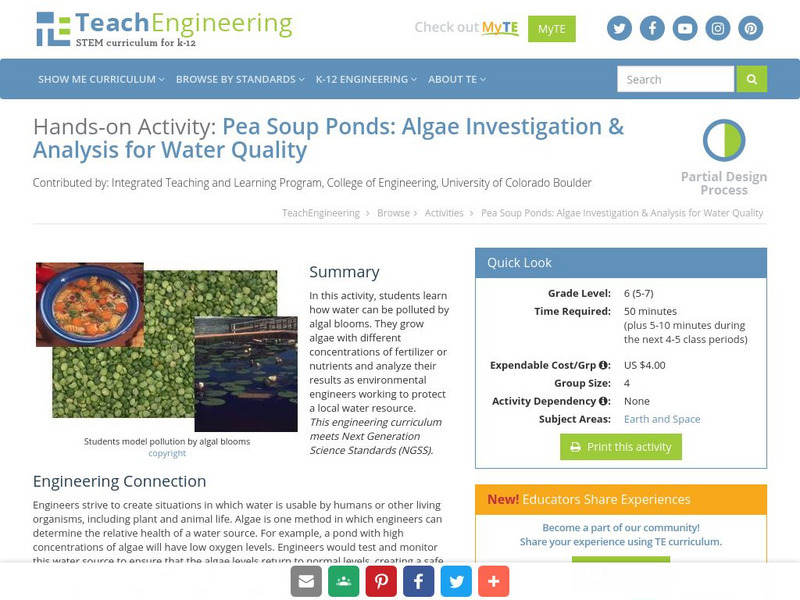
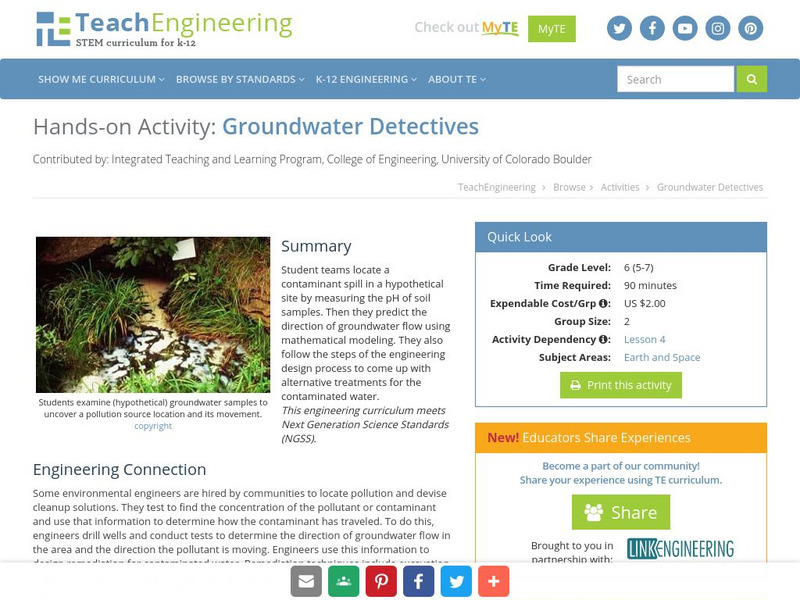


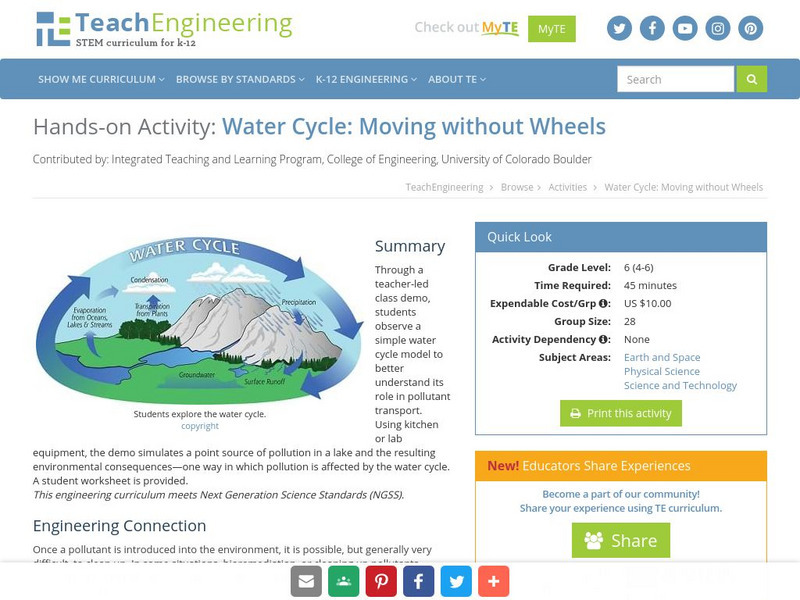

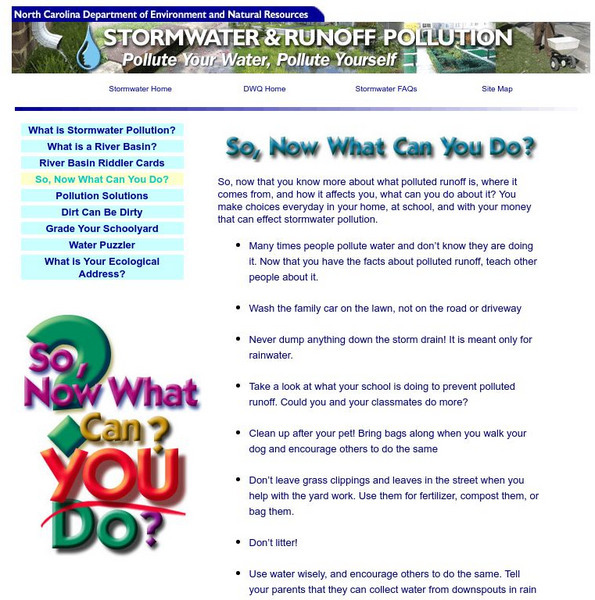
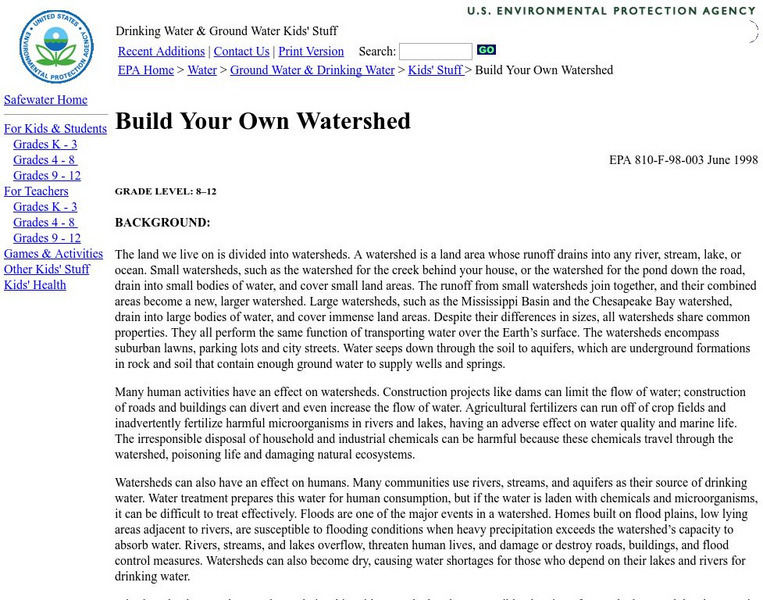
![Eek!: Teacher Resources: Groundwater Study Guide [Pdf] Lesson Plan Eek!: Teacher Resources: Groundwater Study Guide [Pdf] Lesson Plan](https://d15y2dacu3jp90.cloudfront.net/images/attachment_defaults/resource/large/FPO-knovation.png)

